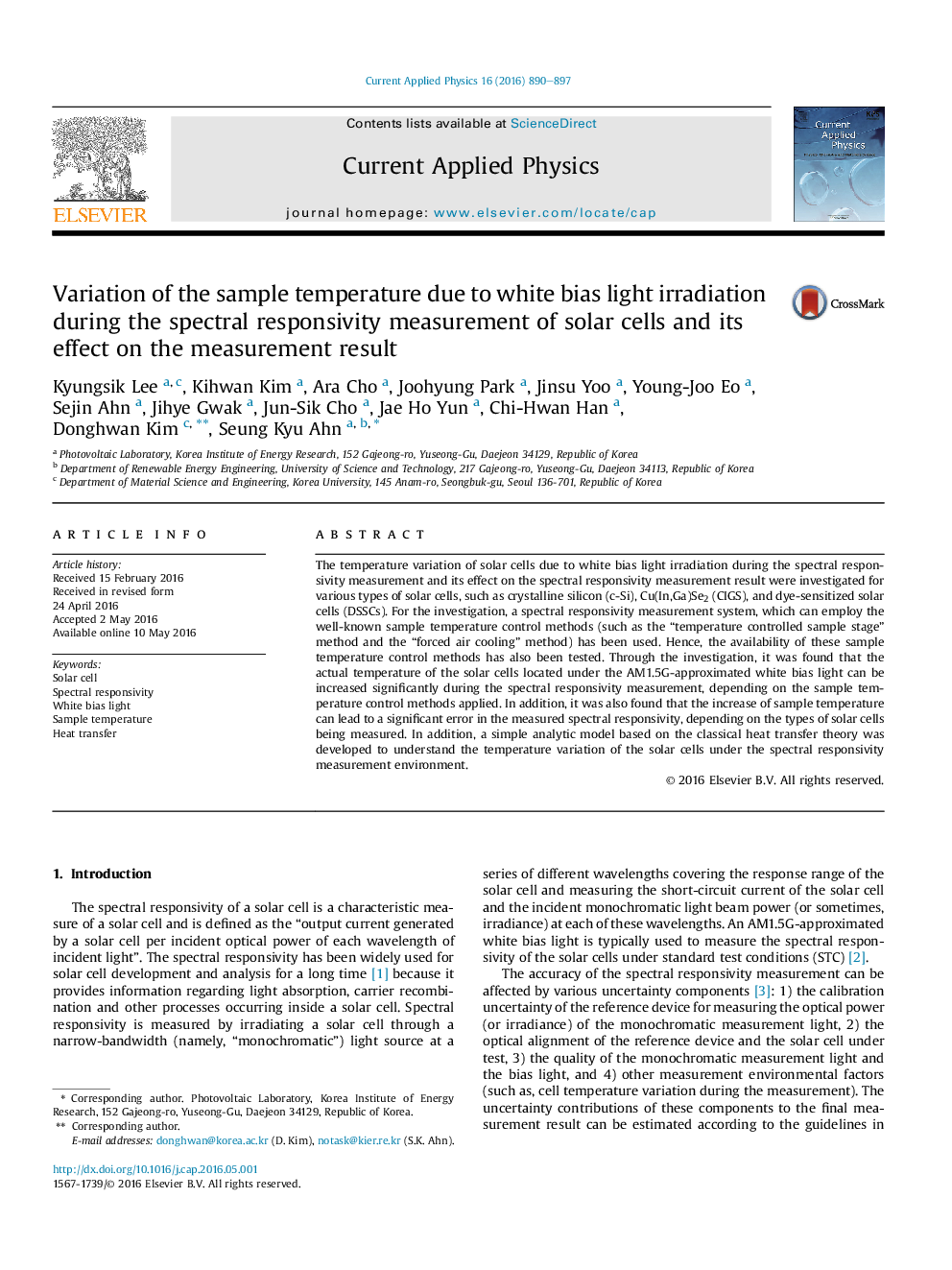| Article ID | Journal | Published Year | Pages | File Type |
|---|---|---|---|---|
| 1785588 | Current Applied Physics | 2016 | 8 Pages |
•We report the effect of the temperature variation of solar cells during the spectral responsivity measurement.•Basically, the effects of the cell temperature variation were investigated through experimental methods.•In addition, to understand the temperature variation of solar cells, an analytic model was developed.
The temperature variation of solar cells due to white bias light irradiation during the spectral responsivity measurement and its effect on the spectral responsivity measurement result were investigated for various types of solar cells, such as crystalline silicon (c-Si), Cu(In,Ga)Se2 (CIGS), and dye-sensitized solar cells (DSSCs). For the investigation, a spectral responsivity measurement system, which can employ the well-known sample temperature control methods (such as the “temperature controlled sample stage” method and the “forced air cooling” method) has been used. Hence, the availability of these sample temperature control methods has also been tested. Through the investigation, it was found that the actual temperature of the solar cells located under the AM1.5G-approximated white bias light can be increased significantly during the spectral responsivity measurement, depending on the sample temperature control methods applied. In addition, it was also found that the increase of sample temperature can lead to a significant error in the measured spectral responsivity, depending on the types of solar cells being measured. In addition, a simple analytic model based on the classical heat transfer theory was developed to understand the temperature variation of the solar cells under the spectral responsivity measurement environment.
